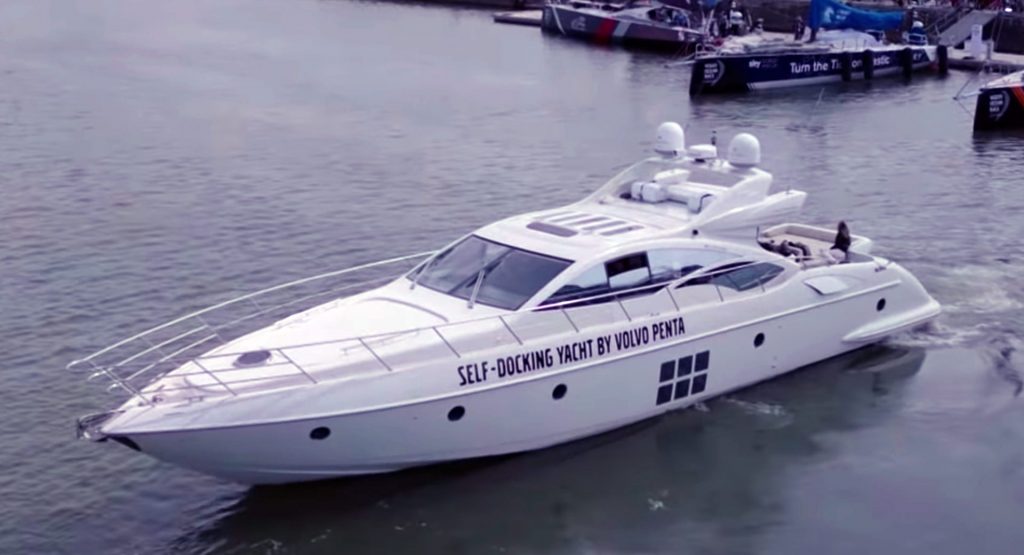Parking a car can be tricky. Now imagine that car is 68 feet long, weighs 40 tons, and is prone to drift around on its own with the wind and water currents. That’s the challenge faced by many yachtsmen, for whom docking is easily the most difficult part of their leisure activity. Fortunately Volvo is on it.
Or at least Volvo Penta is. One of the largest manufacturers of marine engines and associated systems, Volvo Penta is part of the Volvo Group (producer of trucks and buses) that split from the eponymous automaker back in 1999. The Volvo Group has been working as hard on self-driving trucks and buses as Volvo Cars has been on autonomous passenger vehicles. Now Volvo Penta’s latest project is to develop a self-docking yacht.
Not the boat itself, we should point out, but the system that completes the docking procedure for the skipper. It just demonstrated the prototype technology in a 68-foot motor yacht in Gothenburg, where the Volvo Ocean Race (which the Volvo Group and Volvo Cars co-sponsor) stopped this past weekend. And for anyone who’s ever spent any time on the water (especially in motor yachts), the system looks pretty darn impressive.
The technology builds on Volvo Penta’s existing joystick-operated Inboard Performance System (which integrates all the controls) and Dynamic Positioning System (which keeps the vessel on station automatically, even in strong currents and winds). The self-docking system works with sensors that have to be positioned on the dock to work. It alerts when the vessel is near an enabled berth, prompting the skipper to initiate the automatic procedure, and then again when it’s ready to complete the docking. The system does the rest.
“Docking is one of the most challenging boat handling maneuvers – getting it wrong can be embarrassing, expensive and precarious,” says Volvo Penta president Björn Ingemanson. “Our IPS system has already taken great strides in making docking easier, and this new self-docking feature takes that process one important stage further. Its sensors and onboard computers react in milliseconds to changing wind and sea conditions, constantly making micro adjustments in power and steering angle of the IPS drive to keep the boat on its intended course into a safe berth. If necessary, the docking process can be paused, and the system will hold the boat stationary in the water. Even in changing sea conditions it can make the sea appear to stand still.”
This isn’t just some far-flung dream, either. The manufacturer aims to have the feature available by 2020, and what’s more is that owners of vessels already equipped with the Inboard Performance System will be able to retrofit theirs to include the capability, too. Watch the tech at work as the motor yacht docks itself in between two 65-foot racing sailboats in the video below.



